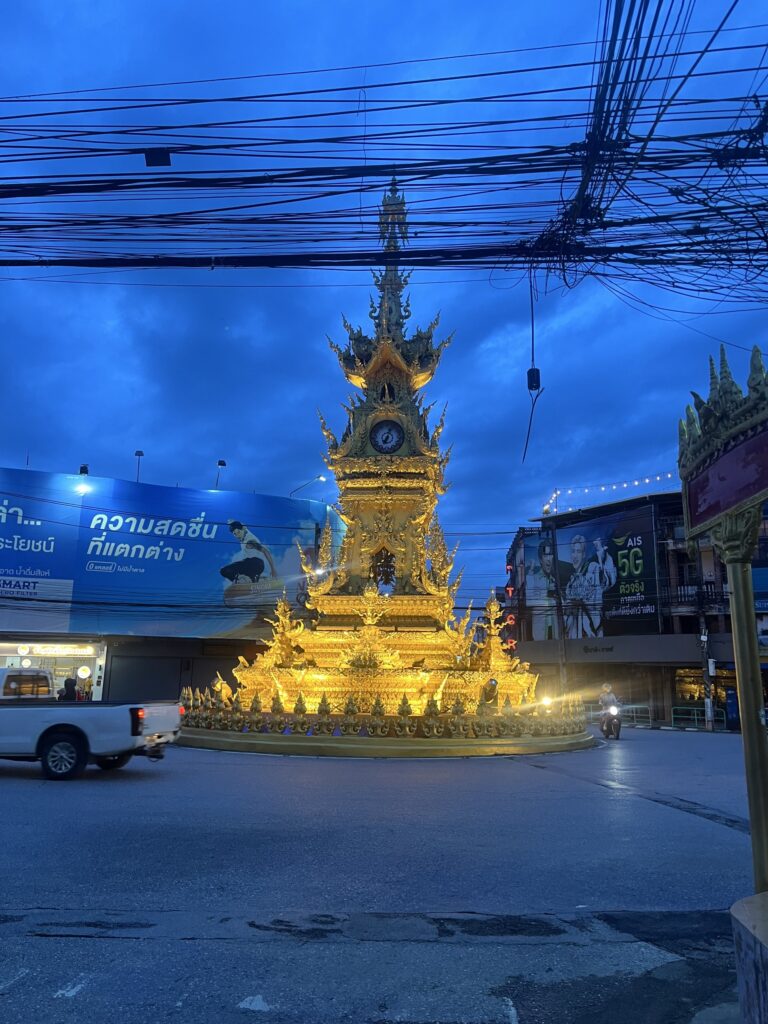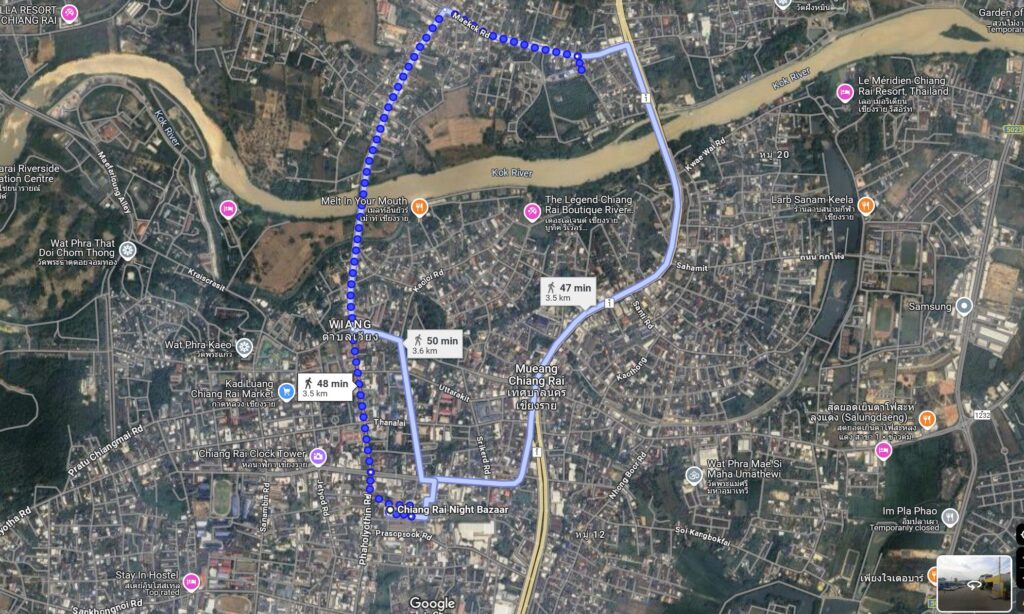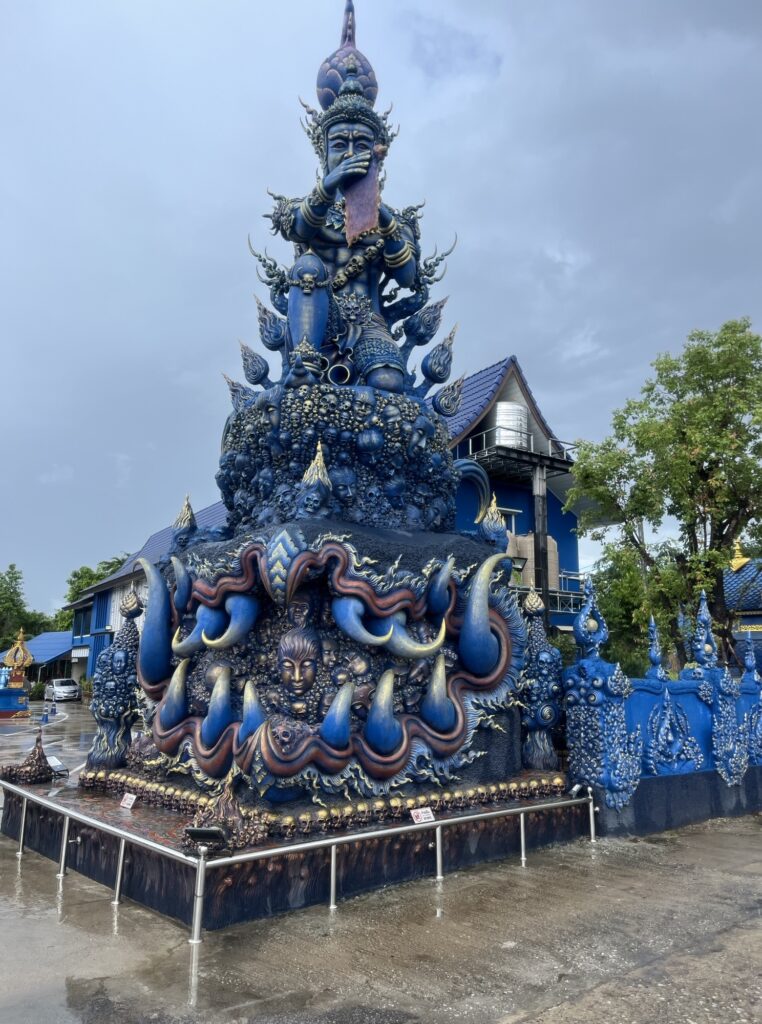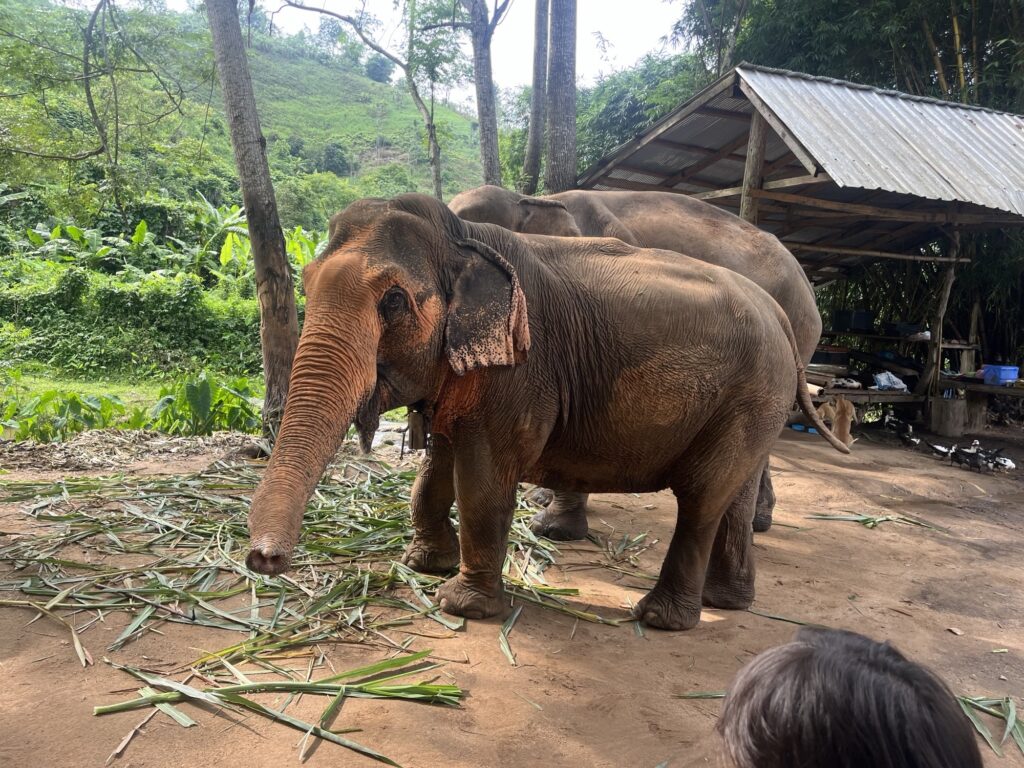What is Chiang Rai?
Chiang Rai is the northernmost major city in Thailand with about 200,000 people living in the town. After an amazing time in Chiang Mai (travel guide here!) It was time for a change of scenery.
In the 4 days I spent in Chiang Rai, I made incredible memories including going out to local Irish pubs, staying in fantastic hostels, and exploring some of Northern Thailand’s fantastic scenery. Chiang Rai serves as an economic powerhouse due to its proximity to the Golden Triangle, the border between Laos, Thailand, and Burma.
The Golden Triangle has long been notorious for its most famous crop, opium. Although Thailand has cracked down on the cultivation of the plant, there still remains historical remnants of this tumultuous past with various museums and monuments.
I thoroughly enjoyed my experience in the region. I witnessed some unique yet beautiful temples, enjoyed the presence of majestic elephants, and got to explore the tri-border area between Laos, Myanmar, and Thailand.

Where I stayed in Chiang Rai
The hostel that I stayed in Chiang Rai was quite possibly my favorite in Thailand. Backpack Hostel was the quintessential place to spend my last few nights in Thailand. It symbolized what a young traveller would want from a hostel including clean rooms, private bathrooms, and an excellent location.
The owner was lovely and made sure that everything was taken care of, including tour bookings, bike rentals, and general advice about the area, not to mention his adorable French Bulldog. Again, this hostel’s location was by far the biggest perk, including being minutes walking distance from the bus terminal and the night market. Prices from $8 dollars a night

My 3-day Chiang Rai Itinerary
Day 1: Temple Day- Explore the Blue Temple and Wat Phra Kaew
Chiang Rai has some of the most unique and creative Wats that I have ever seen in my 3 months in the region. While I was only there for 2 full days and only got to visit one of the landmark temples, there are many more worth exploring in the region.
Wat Rong Suea Ten or more famously known as the Blue Temple is an iconic landmark in Chiang Rai that captivated me prior to visiting due to it’s unique color and decor.
The Blue Temple is a fairly recent development, alongside the White and Black Temples. The temples are not only unique in their design, but also their purpose. The designers behind these temples aimed to create more of an art gallery mixed traditional wat that you will see across the country. The designers used bright and distinct colors, patterns, and characters across the wats to captivate the guest.
Entrance into the Blue Temple is free and its open from 7am – 8pm, allowing you all day to explore this magnificent temple. There are a few ways to visit the temple, including an 8 minute grab bike ride for around 100 baht or a 45 minute walk from the city center (recommended!)

Wat Phra Kaew is another slightly lesser-known temple in the middle of Chiang Rai that I enjoyed greatly. This temple is historic and plays a very significant role in Thai culture. The temple was the original home of the Emerald Buddha, which was allegedly the result of a lightning strike leaving an emerald image into the Buddha. Admission is free and there is a small but interesting museum on site for you to enjoy.

Day 2: Elephants!
It’s difficult to say that you have truly experienced Thailand without having been a part of an elephant experience in the country. Elephants are a key cultural entity in southeast Asian culture, especially in Thailand where they are viewed as sacred and symbols of strength, wisdom, and loyalty.
Unfortunately, due to this activity’s popularity, there has been an incentive to prioritize profit over the ethical treatment of these creatures. A 2015 report stated that 86% of all elephants held in captivity in Thailand were mistreated.
Reducing the demand for unethical sanctuaries is extremely important to understand as a tourist entering the country. I would recommend doing research before visiting any sanctuary on your trip in the region. For Chiang Rai, I can wholeheartedly recommend the Elephant Peace Project.
The project is an indigenous Karen owned ecotourism project licensed by the Department of Tourism. The Karen have a deep and ancient relationship with elephants, utilizing their size and strength in agriculture and logging in previous centuries. Since the outlawing of using elephants in logging activites, the Karen utilized their connection with elephants to shift into the tourism industry.
Seeing the relationship between the mahout (elephant trainer) and each of the park’s elephants was truly spectacular. These elephants are able to roam freely around Thai jungle without restriction, under the watchful eye of their mahout.
The sanctuary offers half and full day tours. The half day includes a hotel pickup, an elephant introduction, a walk with the elephants, and lunch. The full day includes everything listen as well as an elephant bathing session. The half day was around $50

I would recommend to check the website for updated information.
Day 3: Golden Triangle Day Trip
The Golden Triangle is what makes the region surrounding Chiang Rai so infamous. As mentioned above, this area is famous for its opium cultivation which gets trafficked through the region from Burma. Burma remains a key player in this illicit economy due to its political instability and inability to provide proper law enforcement in the region, especially in the warring Shan state.
Chiang Rai serves as a gateway to this region and for the curious tourist like myself, it was too hard to resist.
Chiang Saen is a nearby town along the Mekong that borders Myanmar and Laos about an hour bus ride from Chiang Rai. This town is a quite interesting as it is one of the oldest inhabited cities in Thailand which is made apparent by its ancient walls. Wat Pa Sak and Chedi Luang were some of my favorites during my day trip.
For the more adventurous type, take a trip up to the Golden Triangle landmark which gives you a view of Myanmar, Laos, and Thailand. Apart from seeing China’s special economic zone in Laos, there is not much else to see in this area.
Final Thoughts
Chiang Rai was truly fantastic. It was a sigh of relief from the increasingly gentrified Chiang Mai. Chiang Rai had a sensation of a town that has just recently begun offering more than a day trip from its more popular neighbor. If you want to experience the gateway into this beautiful yet complicated area of Southeast Asia, Chiang Rai is your spot.
